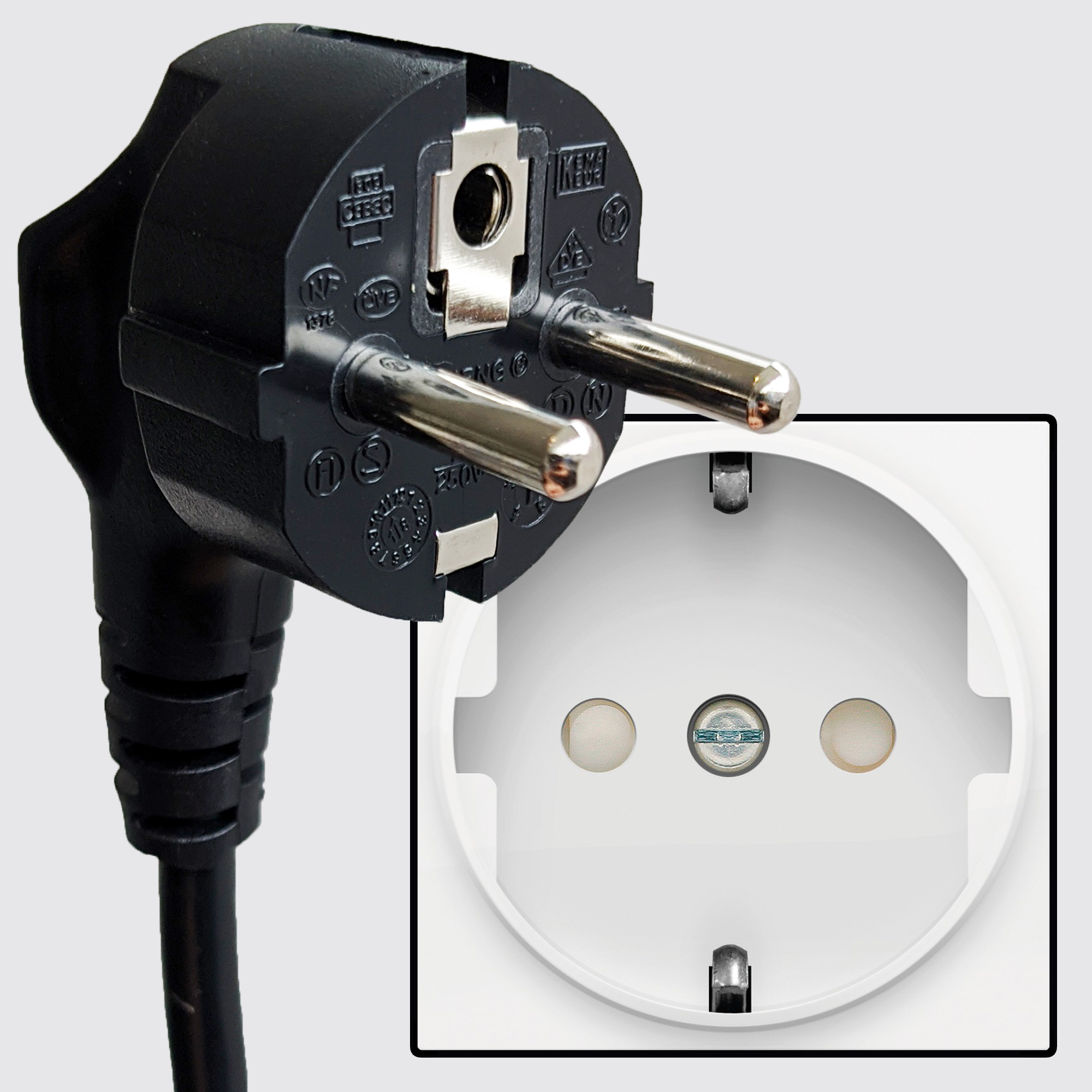Last updated: 1 June 2025

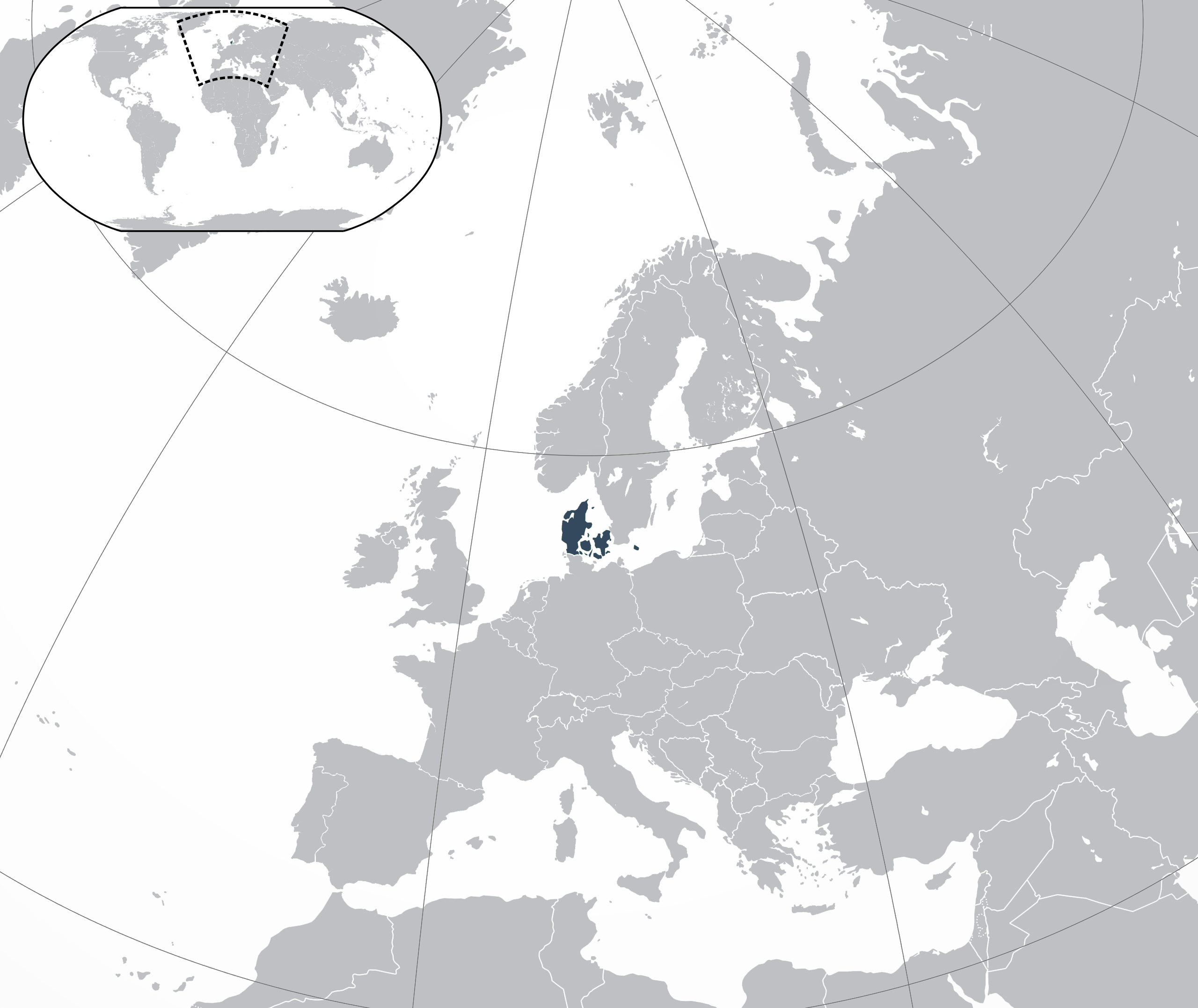
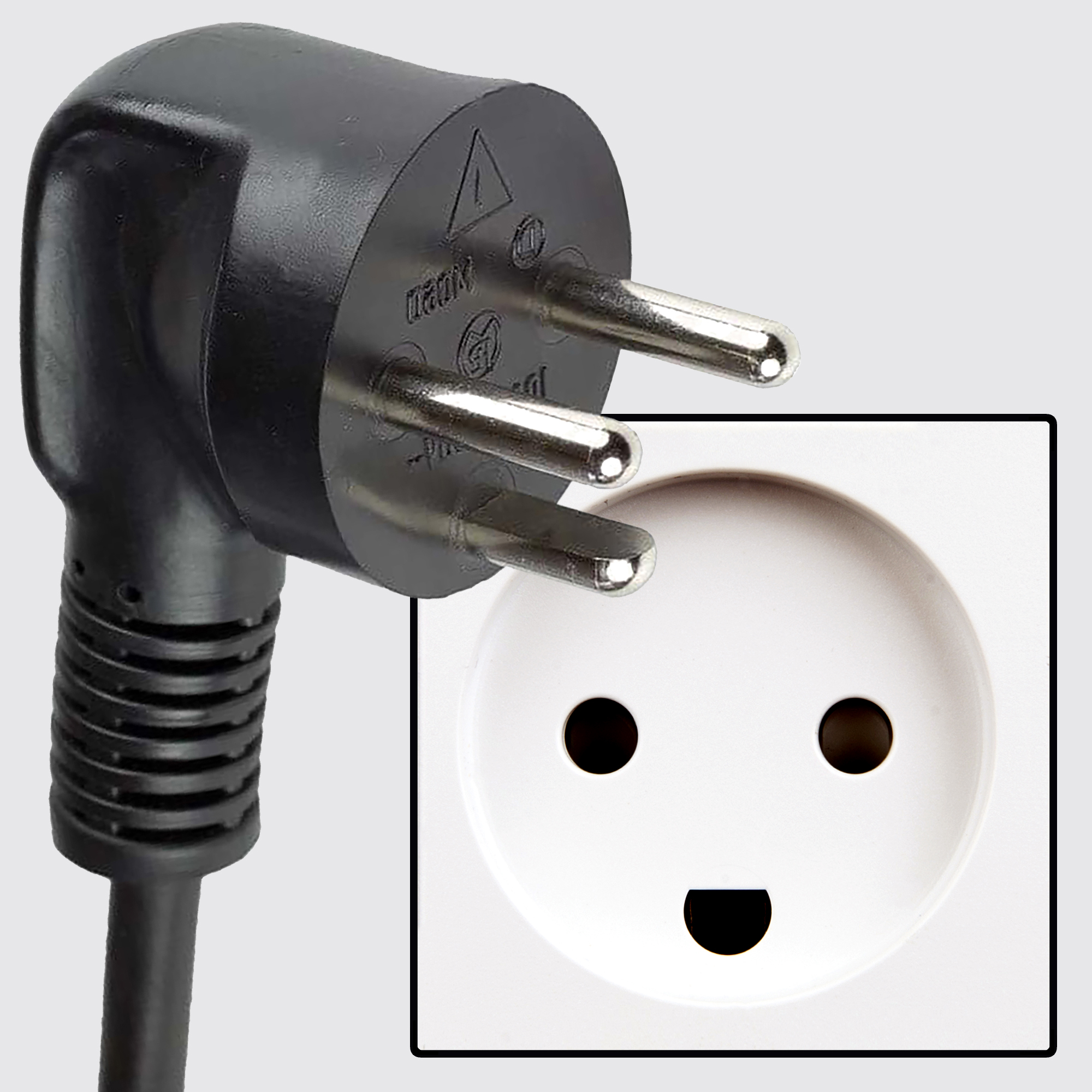
Type K
- only used in Denmark & its autonomous territories
- 3 pins
- grounded
- 16 A
- 220 – 240 V
- socket compatible with plug types C & K (partial and unsafe compatibility with E & F)
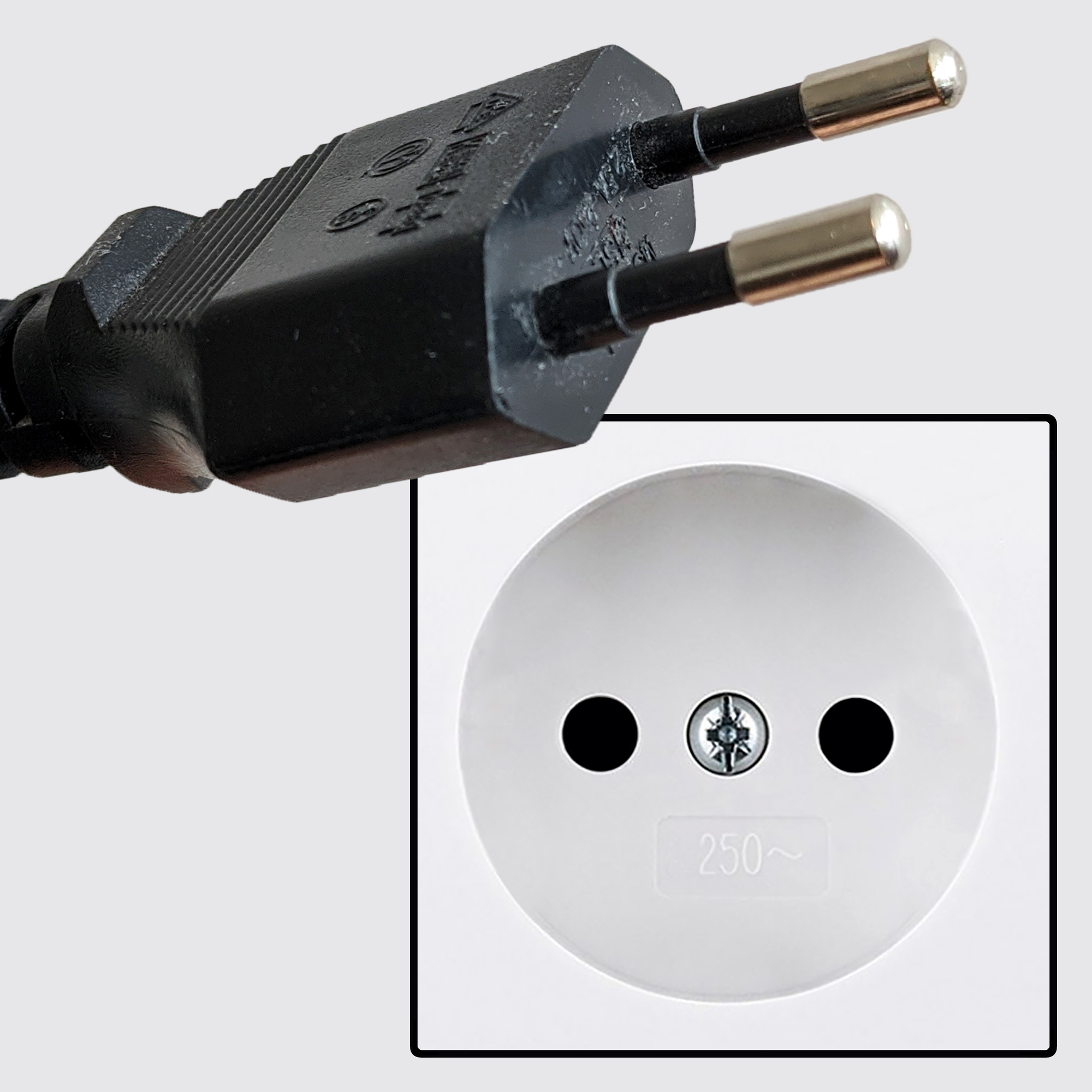
Type C
- commonly used in Europe, South America & Asia
- 2 pins
- not grounded
- 2.5 A, 10 A & 16 A
- almost always 220 – 240 V
- socket compatible with plug type C
What is the mains voltage in Denmark?
Just like the rest of Europe, the voltage in Denmark is 230 volts and the frequency is 50 Hz.
230 V ~ 50 Hz
Background information
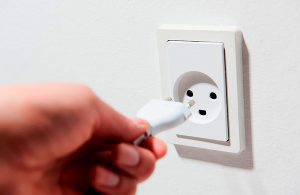
A type C plug and a type K socket
Denmark has standardized on type K sockets and plugs. Type C plugs can also safely be used thanks to their compatibility with type K sockets. Standard European type F plugs, however, pose a problem.
Although type F plugs come with 99.9% of all earthed appliances sold in Denmark, they are actually not fully compatible with Danish type K sockets. The plug fits, but the appliance won't be earthed because Danish sockets require a male grounding pin on the plug, which type F plugs do not have. Many people are unaware of this and do not know that they are supposed to use a type-F-to-type-K plug adapter to ensure that their devices function safely.
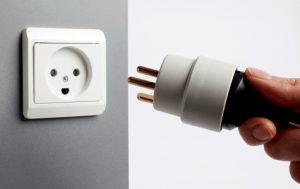
A type-F-to-type-K plug adapter
So currently in Denmark, many appliances that should be grounded are actually not grounded at all. That's why many people get a buzzing sensation in their fingers when they touch the dishwasher, the toaster or even their laptop – in the worst-case scenario, it could lead to shocks that might even be life-threatening.
But why do so few homes in Denmark have type F wall outlets? Simply because until 2008 it was illegal to install wall outlets other than type K. The reason was purely economic: Denmark wanted to shield its only domestic receptacle manufacturer Lauritz Knudsen (LK) from European competition. For years, the Danish government also required all imported appliances to be fitted with type K plugs only.
In the early 1990s, however, Denmark was forced by the European Union to drop the plug requirement, because it constituted an obstacle to the free movement of goods within the European Internal Market. Ever since that moment, almost all electrical devices in Denmark (white goods, microwave ovens, kettles, coffee makers, etc.) have been supplied with a standard European type F Schuko plug.
This would have been the ideal opportunity to abandon the Danish standard altogether and to adopt the type F plug and socket system, but unfortunately that did not happen. It was quite clear that the Danish government aimed to protect electrical accessories manufacturer Lauritz Knudsen from competitors. In doing so, however, the Danish government did create a permanent danger for its residents.
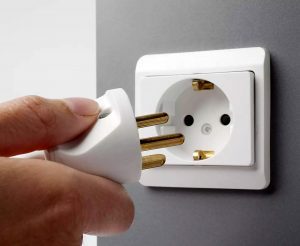
Danish type K plug and an incompatible type F socket
In 2008, the Danish Safety Technology Authority (Sikkerhedsstyrelsen) took a first step in the right direction to change the situation by legally allowing – besides type K – the installation of type E sockets as well. In 2011, they also made it legal to install type F wall outlets. However, the problem is that many of the general public are still unaware of this option. So when building or renovating a house, most people in Denmark do not ask their electrician to install type F wall outlets, simply because they do not know that option is even on the table. To make matters even worse, for some unknown reason type F receptacles, plugs and extension cords are also very hard to come by in Danish DIY stores. In short, the dangerous status quo in Denmark still remains.
In my opinion, the current position of the Danish Safety Technology Authority is utterly incomprehensible. What is the point of rigidly adhering to a system that has long outgrown its usefulness? It is clear to everyone that the only way forward is for type K to be phased out and type F to become the sole official Danish standard.
